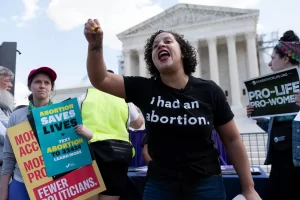
Supreme Court allows Louisiana's congressional map with new, mostly Black district
On Wednesday, the Supreme Court approved Louisiana’s use of a congressional map featuring a second majority Black district, a decision with significant implications for congressional control following the November elections.
Responding to an emergency request from state officials and voting rights advocates, the court’s ruling marks the latest development in a protracted struggle over the racial, political, and redistricting dynamics of Louisiana’s six congressional districts.
“Louisiana will finally have a fair and equitable map,” stated Jared Evans, an attorney with the NAACP Legal Defense Fund.
This Supreme Court decision temporarily halts a lower court’s ruling that had invalidated a map increasing the number of predominantly Black districts from one to two. Louisiana Attorney General Liz Murrill remarked that the court’s intervention brings much-needed stability to the state’s election process amid looming deadlines.
Attorneys representing Louisiana voters who contested the map described it as a “brutal racial gerrymander,” expressing confidence that the Supreme Court will ultimately strike it down in future proceedings.
Southern states have grappled with finding what Chief Justice John Roberts termed in a 2014 Alabama case as “the sweet spot” for incorporating race in redistricting while adhering to a 1965 civil rights law, without resorting to unconstitutional racial gerrymandering.
Richard Pildes, a constitutional law professor at New York University School of Law who argued the 2014 Alabama case, labeled the Louisiana case “the biggest procedural train wreck” related to the Voting Rights Act that he has encountered.
In 2022, a federal court concluded that the power of Black voters was diluted under a map created by the Louisiana legislature featuring only one mostly Black district, despite Black people constituting about one-third of the state’s population.
However, when the GOP-dominated legislature devised a map with two majority Black districts—one stretching diagonally across the state—a divided panel of federal judges sided with a group of “non-African American” voters who contended it was unconstitutional due to race being the primary consideration.
Critics branded the map as “morally repugnant,” arguing before the Supreme Court that it disregards traditional redistricting principles, such as maintaining compact areas and communities with shared interests, instead creating a district with an erratic shape.
State officials contended that, besides adhering to the Voting Rights Act, the map’s boundaries were selected to safeguard influential incumbents, including House Speaker Mike Johnson, Majority Leader Steve Scalise, and Rep. Julia Letlow, a member of the House Appropriations Committee.
The judges imposed a deadline of June 3 for the state to revise the map, warning that they would impose their own if necessary.
Louisiana officials emphasized to the Supreme Court that district boundaries needed finalization by May 15 to meet deadlines for candidate filings and other election preparations.
“This madness must end,” Attorney General Murrill asserted, urging the court to intervene.
If a new map is not established by May 15, Murrill warned that the only way to avert “election chaos” would be to revert to the original map with one majority Black district, still programmed into Louisiana’s voter-registration system.
The NAACP Legal Defense Fund stressed that Black voters in Louisiana were already underrepresented due to the unsettled maps in the 2022 election and urged that such harm should not recur.






